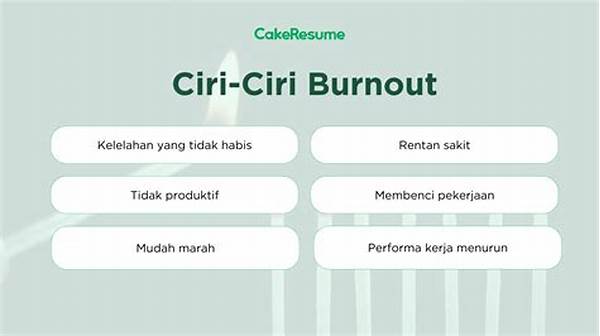Understanding the Signs of Burnout
Burnout is more than just a buzzword thrown around in today’s fast-paced work culture. It’s a legitimate psychological syndrome arising from chronic workplace stress that has not been successfully managed. Imagine you’re on an endless treadmill, where no matter how fast you run, you never seem to arrive at your destination. This is burnout. It’s sneaky, often creeping into our lives gradually, and it affects our physical, emotional, and mental well-being. The term “burnout” was first coined in the 1970s by psychologist Herbert Freudenberger, and it is characterized by three primary dimensions: exhaustion, cynicism towards one’s job, and feelings of reduced professional ability.
Read More : Sleep-friendly Meditations That Help Recover From Burnout
In the realm of modern corporate culture, burnout has found its footprints across professions, from healthcare providers to educators, tech workers, and more. This isn’t just about being tired. It’s an all-consuming exhaustion, accompanied by isolation and a feeling of helplessness. The world feels dull, your passion for work diminishes, and the routine tasks that once felt manageable now feel insurmountable. You’re not alone; recent surveys suggest that about 77% of professionals have experienced burnout at their current job. It’s time to confront the signs, understand them, and take meaningful action.
Identifying the Characteristics of Burnout
So, what are the predominant characteristics or “ciri ciri burnout” you should be watching for? First, there’s the overwhelming fatigue that doesn’t go away even after resting. Imagine waking up from a full night’s sleep only to feel as weary as when you went to bed. Then, there’s a feeling of detachment or apathy towards your work or even people around you. You might find yourself saying, “I just don’t care anymore.” Additionally, burnout leads to a drop in performance. Tasks that were once easy feel impossible, and you notice an increase in procrastination. These signs, if left unchecked, can spiral into more severe mental health issues, such as depression or anxiety.
When Exhaustion is More than Just Tiredness
The sensation of continuous fatigue isn’t merely physical; it’s deeply psychological. We often attribute tiredness to inadequate sleep or overexertion, but burnout brings tiredness to a whole new level. It’s a weariness that sleep doesn’t fix, a constant drain on your energy reserves. According to research, people suffering from burnout often describe their rest as unrefreshing. The cycle doesn’t end here. Lack of energy impacts motivation and cognitive function, making everyday tasks feel significantly harder.
Conducting In-depth Analysis of Burnout
Let’s dive deeper by addressing a story that might resonate with many. Meet Jenna, a dedicated marketing manager at a bustling tech firm. She loved her job, thrived on challenges, and was always the one colleagues approached for advice. Gradually, the long hours without adequate breaks piled up, and Jenna felt she couldn’t keep up. Small errors became frequent, and her patience wore thin, affecting her interactions with co-workers. Jenna’s performance plummeted, not due to lack of effort, but because she was unable to recognize the signs of burnout early enough. Stories like Jenna’s highlight the importance of awareness and early intervention.
A Call to Action: Combating Burnout
What steps can you take when the telltale signs of burnout start to show? Recognize it early, communicate your struggles, and seek professional or managerial support. Remember, asking for help is a sign of strength, not weakness. Employers are becoming increasingly aware of the significance of mental health, and there are resources and strategies available, from wellness programs to flexible work arrangements. Understanding burnout allows individuals and organizations to create more supportive environments that focus on well-being as much as productivity.
Practical Steps to Alleviate Burnout
Now, let’s get practical. Here are ten actions you can take when faced with the “ciri ciri burnout”:
The Mission to Tackle Burnout
Our mission is simple yet impactful; to eradicate the stigma around burnout and encourage open conversations about mental health in professional settings. The ultimate goal is to foster workplaces where mental health is prioritized equally to output. In this pursuit, we must adopt a holistic approach, incorporating stress management techniques and fostering a culture of empathy and understanding.
By addressing the “ciri ciri burnout” early on, we can mitigate its impact and ensure a healthier, more engaged workforce. This isn’t just about enhancing individual well-being; it’s about creating environments where team members can thrive collectively, driving success and innovation. Let’s commit to acknowledging the signs of burnout, acting proactively, and supporting each other in this journey towards wellness. Together, we can turn the tide on burnout, transforming it from a rising epidemic into a manageable challenge with solutions.
